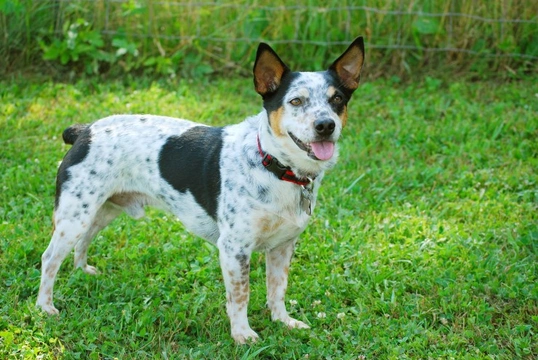
Common Reasons Why Dogs Pant
Dogs pant for all sorts of reason, such as being out of breath, to cool down, because they are ill, or out of fear. Panting is a natural canine reaction that you will likely see your dog displaying every day, but as the reasons for why your dog might be panting can be so variable, it is a good idea to learn a little bit about them, and learn to identify the difference between different reasons for why your dog might be panting.
In this article, we will cover some of the most common and not so common reasons for why you might see your dog panting. Read on to learn more.
1. Out of puff
The time that you are most likely to see your dog panting is if they are exercising, or are resting after a period of exertion. This serves a dual purpose-part of which is to cool your dog down, as we will examine in more detail in the next section-one part of which is simply to get more air after exertion.
When dogs exert themselves, their muscles go through what is known as anaerobic respiration, or respiration that does not involve oxygen. This process helps to turn glucose into lactic acid to support movement, and is also what can lead to cramps and muscle exhaustion too.
Once a dog has exerted themselves to the point that they get a little out of puff, they need to stop to breathe deeply, recirculating oxygen around the bloodstream back to the muscles to help to eliminate the lactic acid and return the body to its resting norm.
Put simply, panting during or after exertion is necessary to oxygenate the blood, as the more your dog exerts themselves, the more air they need.
2. Cooling down
The other key element of panting when related to exertion is to help to cool the dog down. Dogs do not sweat like people do-they barely sweat at all, and only through their noses and the pads of their paws, which is not enough to cool them down properly.
Opening the mouth wide and panting allows the dog to inhale cooler air, and as the tongue is a large organ that is rich in blood vessels, cooling the tongue down helps to bring down the dog’s entire body temperature, as the blood vessels of the tongue then circulate the cooler air throughout the body. The passage of cool air through the nasal passages, also rich in blood vessels, forms an important part of this too.
3. Sunstroke
Sunstroke or heatstroke can occur when your dog’s body temperature becomes dangerously high, and they are unable to bring it down themselves due to the environmental temperature, or because they simply cannot get enough air to cool themselves down effectively. This unstable temperature can lead to excessive panting on the part of the dog as they attempt to cool themselves down, and you should keep a careful eye on your dog during hot weather to ensure that they are panting normally and not entering the first stages of sunstroke or heatstroke.
4. Brachycephalic dogs
Brachycephalic dogs are those with short, flat muzzles, which means that their airways and mouths are shorter than normal too. The shorter the dog’s muzzle is, the less area there is available for the exchange of air, which means that brachycephalic dogs find it harder to cool down than dogs with longer muzzles.
It is particularly important for the owners of brachycephalic dogs to keep a careful eye on their respiration, and if the dog is struggling for air regularly or seems to suffer unduly from exercise intolerance, talk to your vet about potential solutions, such as corrective surgery.
5. Symptoms of illness
A wide range of different illnesses and health problems can lead to excessive panting in dogs, and a dog that feels nauseous, has an upset stomach or that has eaten something toxic or poisonous may well pant when at rest, which can be an important symptom.
If your dog suddenly starts panting for no reason when at rest, consider carefully if there are any other indications present that indicate something may be wrong.
6. Appeasement
Dogs use a wide range of calming signals when communicating with both other dogs and people, and a dog that feels threatened, is nervous or that is trying to come across as non-threatening may open their mouths and relax their jaw and pant.
This is a common method of canine communication when it comes to trying to defuse a potentially aggressive situation, and you may find that you will notice dogs doing this when they meet for the first time.
7. Fear
Fear or nervousness can lead to panting in the dog, and this is something that you are particularly likely to notice around bonfire night if your dog is afraid of fireworks, or at other times when your dog is faced with something that scares them.
Just as people’s respiration changes when they enter fight or flight mode, so too is the same true for your dog, and so keep an eye out for the signs that something is amiss with your dog if they are panting when at rest.



